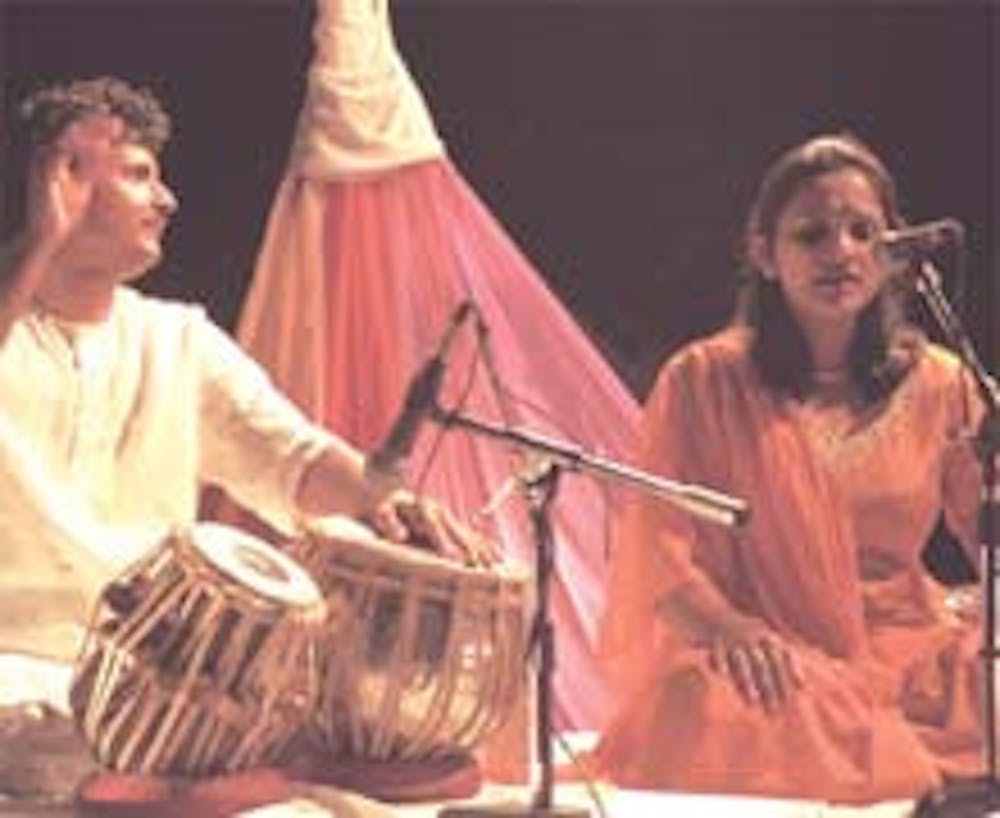Showcasing their unique culture, Spicmacay, a group of four professional artists from Puna, India, hosted an evening of North Indian traditional music and dance at the Physical Education East Building on Friday.
The North Indian musical foursome has been touring the United States since September.
"This one of our first concerts featuring North Indian culture," said graduate student and Spicmacay member, Srinath Rangan.
Rangan added that Spicmacay is a national organization that helps Indian students who live abroad to stay in touch with their culture.
"We want to increase awareness of Indian culture on campus," Rangan said.
With one artist on a traditional Indian sitar, another holding the tempo on the tabla drums and a vocalist complimenting the erratic mannerisms of the Kathak Dancer, the four artists poetically demonstrated a style of Indian culture called Kathak, which has its origins in Buddhists temples 400 years ago.
The dances, which can be a form of prayer, originated when much of India was illiterate. Dance and music was an efficient way to convey Indian religious mythology to the masses.
The humble 22-year-old professional Kathak dancer Kaveri Agashe, who has toured the United States before, said American audiences have been very responsive.
"I'm very proud to be apart of this project," Agashe said. "With my art I can spread my culture."
After the 4-hour concert, former ASU student Pradnya Chitnavis said Kaveri Agashe's performance was amazing.
"For an artist to reach such a high level at such a young age is impressive," said Chitnavis, a native of Puna, India, who added that she was proud to see her Indian culture slowly emerging in the West.
Anthropology junior Elizabeth Prepsky said the performance was culturally simulating.
"I'm glad to see this quality of performers for the students," Prepsky said.
Reach the reporter at matthew.garcia3@asu.edu.




